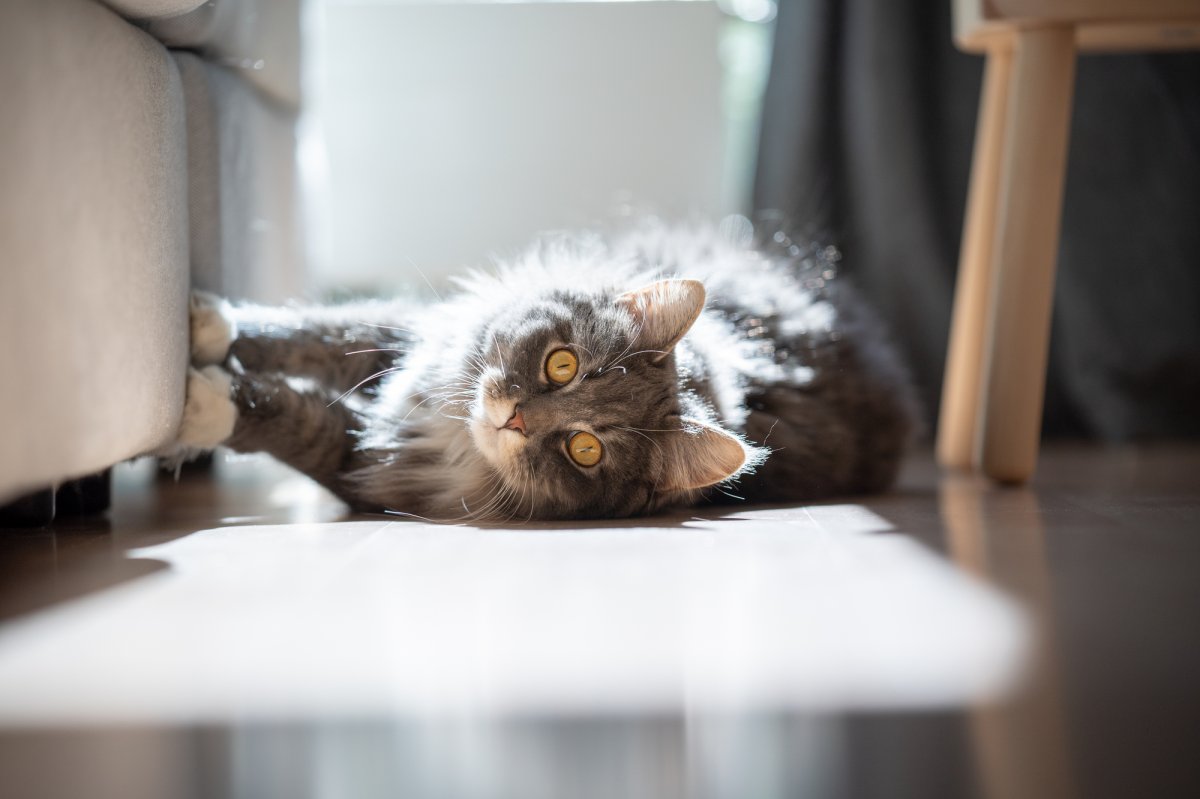We may earn revenue from the products available on this page and participate in affiliate programs. Learn More ›
It’s a common cat owner conundrum: How do you stop cats from scratching your furniture when they simply seem unable to keep their paws off of it? Housecats are lovable pets, but we don’t always love the destructive effects that their sharp claws can have on our upholstery. According to Susan Nilson—an accredited animal trainer, dog and cat behavior expert, and owner and founder of The Cat and Dog House—learning how to stop cats from scratching up furniture first requires some understanding of why they might be doing it in the first place.
Explaining why cats scratch, Nilson says, “Scratching is an innate behavior that helps cats maintain their claws, stretch their limbs and muscles, and release tension or pent-up energy. Cats also use scratching as a way to mark their territory, via the scent glands in their paws.” She says cats often choose to scratch furniture because they like its texture, or because there are no other desirable scratching outlets in their indoor environment.
Proactive prevention might be the best way to stop your cat from scratching up the sofa or the leg of your favorite wood table, and it might even spice up your cat’s daily enrichment in the process! Because every cat and every home are different, though, you may need to try one or several of the methods below until something works for you.
Tools & Materials
Bobvila.com may earn a commission from purchases made through these links.
Project Overview
Working Time: 10 minutes to 1 hour
Total Time: 10 minutes to 1 hour
Skill Level: Beginner
Estimated Cost: $20 to $100
Method 1: Offer your cat appealing scratching alternatives.
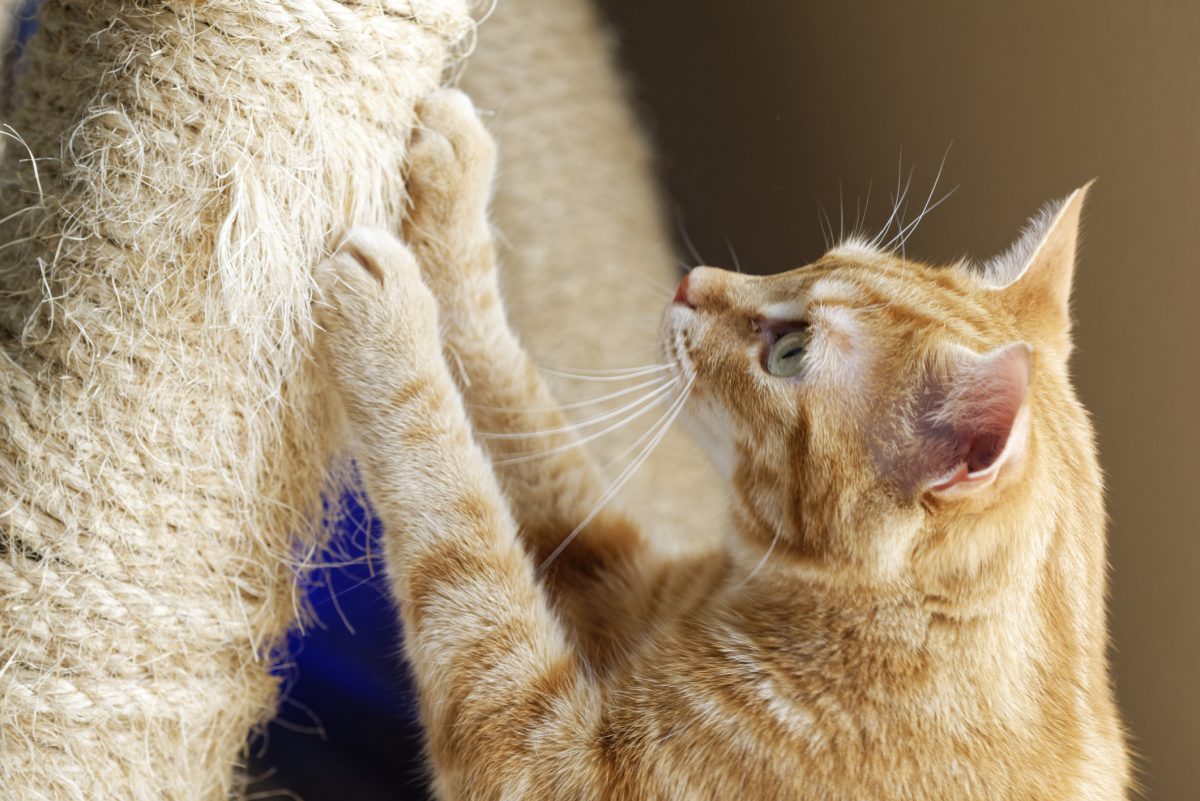
Since cats’ instinctual scratching behavior is so beneficial for them, it makes sense that a cat who’s scratching on walls or furniture shouldn’t realistically be expected to stop without being provided an acceptable scratching alternative.
Nilson recommends putting out cat scratching posts or mats, which most cats find more than the textures and materials of your home’s furniture. She details, “Research shows that most cats prefer scratching on sisal or rope surfaces, so start by introducing scratching posts made from these materials. Scratch posts should be at least 3 feet tall, as cats generally prefer to scratch vertically at that height at a minimum, according to the research.” No two cats are quite the same, so she explains that you may need to experiment with different scratcher options, such as horizontal carpet or corrugated cardboard scratching mats, until you find your kitty’s preferred scratcher type and material.
While your cat gets used to the new scratchers, position them nearby their usual furniture targets. Nilson elaborates, “A good way to generate interest and create a positive association is to sprinkle catnip at its base, or engage your cat in interactive hunting games around it so they can chase and pounce on a toy. Both activities will often lead automatically to scratching behavior, and at the same time will help establish the scratch post as an enjoyable and rewarding part of your cat’s environment.” As your cat adjusts to using the scratching posts instead of your stuff, you can gradually shift them away from the furniture to new locations in the same room or elsewhere in the home.
Method 2: Deter your cat with repellent or pheromone sprays.
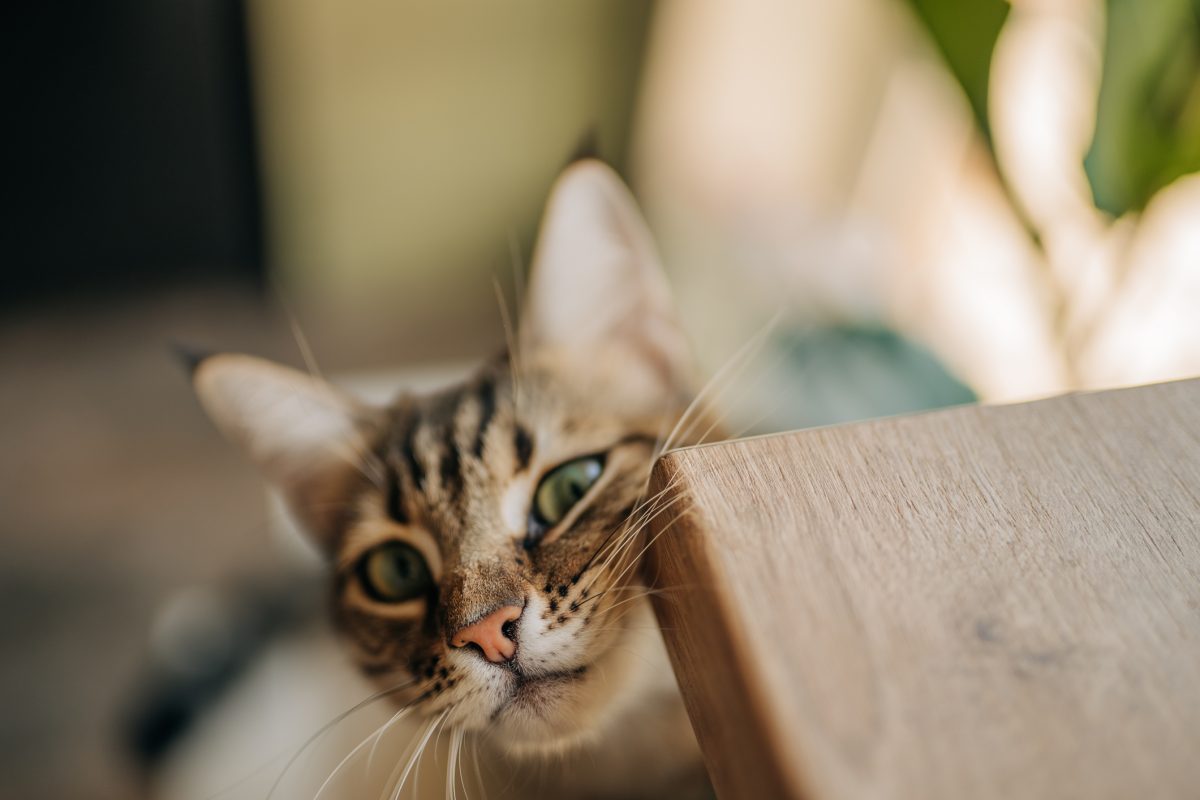
In addition to offering more scratching options, you can also take steps to make your furniture less desirable to cats by applying liquid cat repellent to it. Cat repellent sprays for furniture contain odors that cats typically don’t like, and most cats will avoid spots in a house where these unpleasant smells are strongest.
There are also cat pheromone sprays, which work differently than repellents while providing a similar end result. Applying a pheromone spray like Feliway to furniture can deter cats from scratching in the immediate area, as they’ll usually avoid scratching in spots they think they’ve already recently marked.
Method 3: Stimulate your cat and limit stress factors.
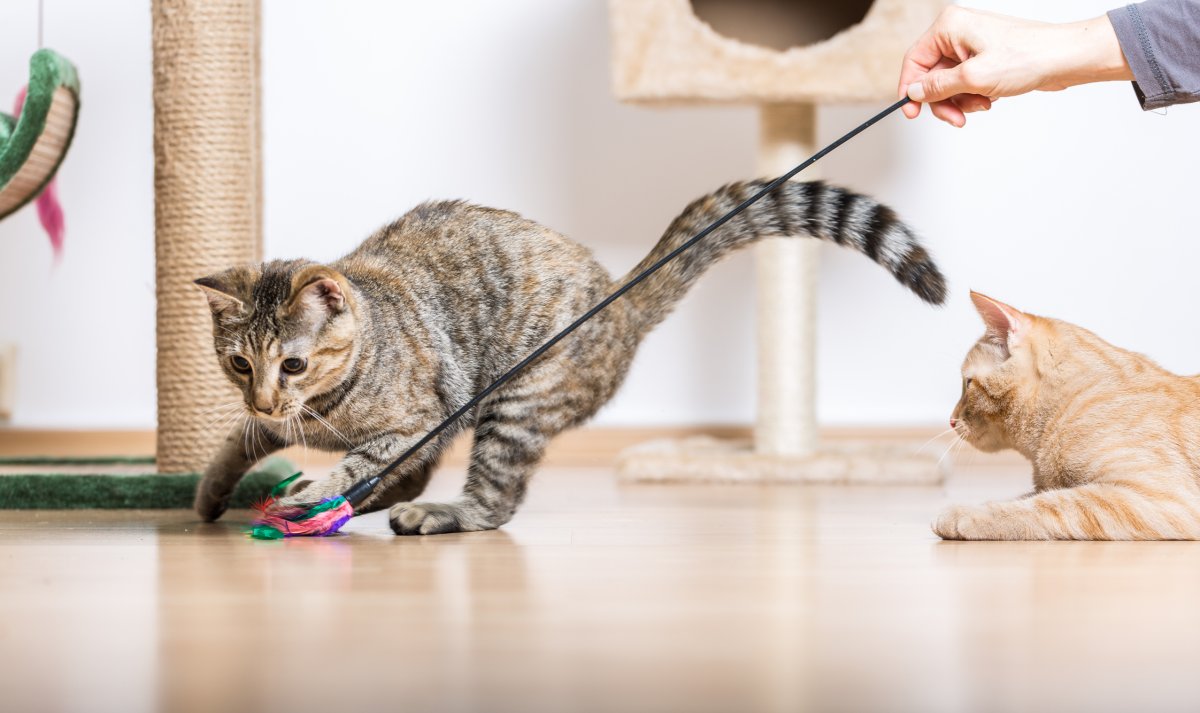
Sprays aren’t the only way to deter cats from scratching furniture, as it’s also important to consider their overall wellbeing when it comes to behavior issues. A cat that scratches furniture despite being encouraged to scratch elsewhere might be bored (or even depressed) due to a general lack of stimulation. Finding time to play with your cat each day and introducing puzzle feeders and/or interactive toys in your home can help give them the mental stimulation they need, potentially curbing their scratching behaviors in the process. Stimulation alone may not fully stop your cat from scratching furniture, but it may prove extra effective when combined with other methods.
Similarly, when a cat is overly stressed, it can also lead them to scratch on things they wouldn’t normally. If your cat is exhibiting symptoms of stress, using a calming pheromone spray or plug-in diffuser can naturally bring down their stress levels. Adding a few cat-safe houseplants with calming properties, such as valerian, may also help. Setting up an additional litter box(es) or food bowl(s) can minimize stress in a multi-cat household, as well. And if you have dogs, that might be another potential source of stress for your cat. If your kitty isn’t a fan of their canine siblings or just needs some occasional alone time, consider installing a special door latch on the entrance to a designated dog-free room or floor of your home.
Method 4: Protect your furniture from scratching.
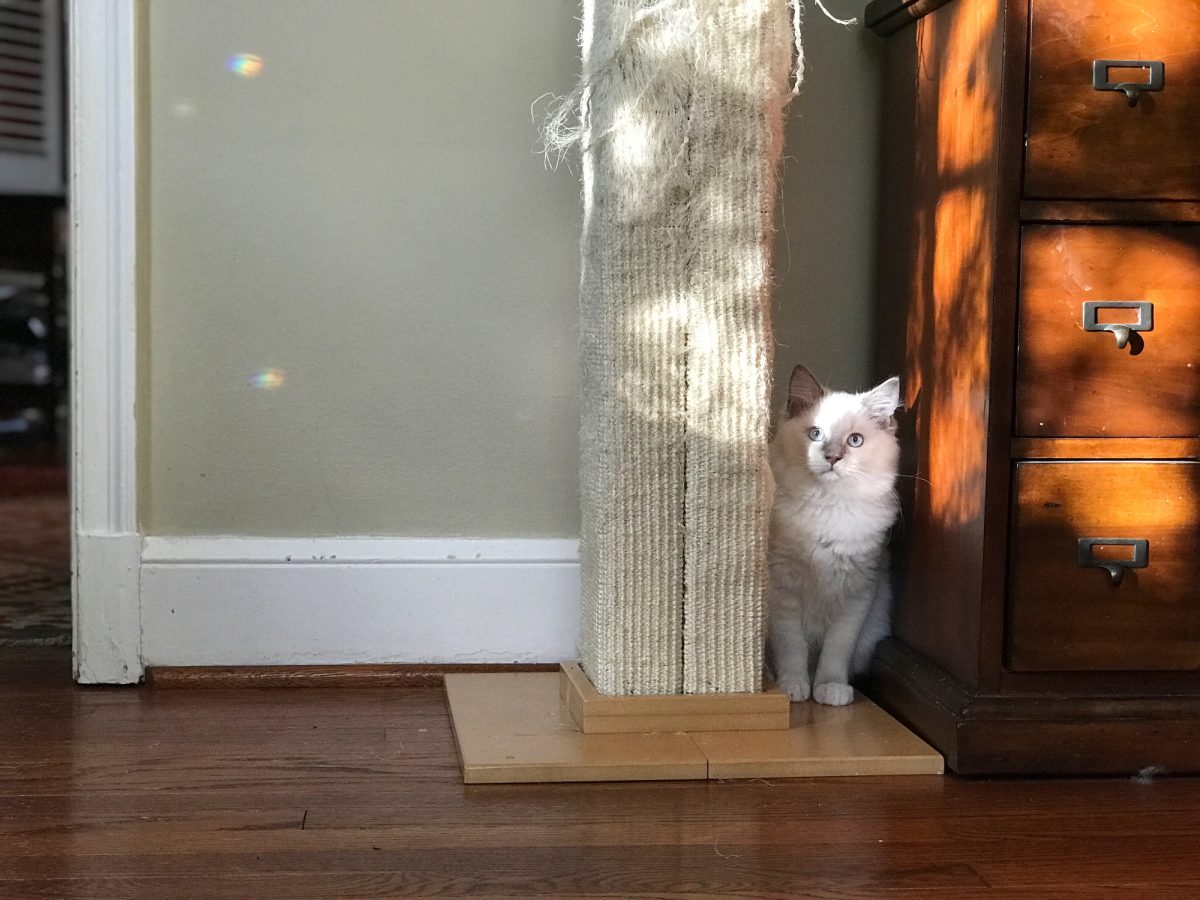
Cats are complex creatures with plenty of needs, so the above methods may not yield immediate success with getting your cat to stop scratching your furniture—and that’s okay! Whether as an interim solution or a quick shortcut, you can alternatively try using cat furniture protectors to keep the claw marks off of your upholstery.
In addition to traditional furniture slipcovers, there are double-sided sticky sofa corner protectors that do the trick particularly well. These strips and tapes can be placed on the corners of the furniture (or over other areas) where your cat likes to scratch.
There are also larger adhesive sheets that you can apply over the entire side, cushion, or back of the couch where your cat likes to scratch. Cats aren’t fans of the sticky texture of these protectors, and they don’t provide the feedback they’re looking for when scratching. This makes it less likely that a cat will return to try to scratch again, especially if you leave the protectors in place long term. Just be sure to first clean the surface of your furniture before applying the sticky covers, as dirt and debris may make the adhesive less effective.
Final Thoughts
Taking steps to both protect your furniture from cat scratches and deter your kitty from scratching there in the first place can help you preserve your sanity along with your belongings. Though this primer on how to stop cats from scratching furniture will work for some households, it may take weeks or months in others, so patience is key. Finally, no one knows your cat better than you. If you think your cat’s scratching behaviors could be symptomatic of something more serious, consult your veterinarian immediately.

